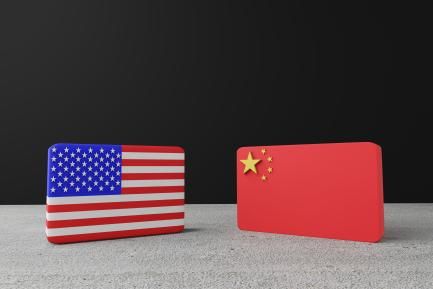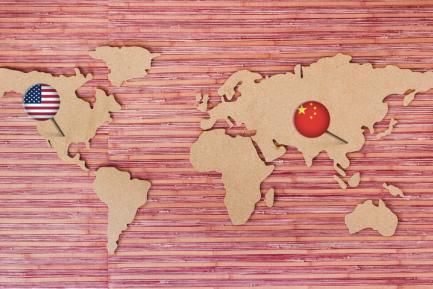The liberalisation of economic transactions between countries has come a long way thanks to the powerful boost received after the Second World War but there is still some way to go and it is not all plain sailing, as seen in the standstill of the Doha Round of multilateral negotiations that has lasted more than a decade. As an alternative to the Doha Round, bilateral free trade and investment agreements have proliferated over the last few years. One of the most notable involves the European Union (EU) and the US and is called the Transatlantic Trade and Investment Partnership (TTIP). Although preparations for the TTIP have been going on for some time, negotiations did not effectively begin until 2013. The aim is clear: to set up an integrated economic area free from tariffs and regulatory barriers for manufactured and agricultural products and to harmonise regulations governing investment flows and trade in services. This project has aroused interest and controversy in equal measure due to its huge size, the far-reaching integration proposed and the geostrategic motivations that can be inferred from it.
Should it come about, the TTIP would be the largest bilateral trade agreement in history given the economic size of the two parties involved: although they account for barely 10% of the world's population, the EU and US total almost 50% of the world's GDP, accumulate one third of its trade flows and receive more than 30% of international foreign direct investment. Much more important than getting rid of tariffs (which are currently very low, below 2% of the value of the goods on average), the agreement aims to establish a regulatory framework for products and processes to facilitate commercial exchange, the provision of services and investment between both regions. The most important barriers between these two areas are non-tariff barriers (regulations, laws and policies) which hinder transatlantic transactions. In addition to this goal is the aim to encourage cooperation in sensitive areas such as intellectual property rights (deep-rooted in US society), the labour market (an issue that could undoubtedly arouse misgivings among Europeans due to lower protection given to workers on the other side of the Atlantic) and the environment.
The US and EU are certainly two of the world's most similar economic regions in terms of standards and regulations for products and processes. But the TTIP is nevertheless undertaking an arduous and controversial task given the uncertainty any attempt at altering the status quo tends to create. The main factor in its favour, put forward by both the EU and US authorities, are its economic benefits. There is broad consensus that, in the medium term and at a global level (as the sum of the different parties affected), greater commercial liberalisation boosts economic growth thanks to increased production and efficiency (see the article «The economic impact of the TTIP» in this Dossier for a detailed analysis of the benefits). In the short term, there will be significant costs, such as those resulting from the rising unemployment in those sectors most affected by greater competition. The challenge of the TTIP is to resolve these short-term obstacles without losing sight of the road towards integration.
Nonetheless, beyond the effects in terms of GDP and income, one concern expressed by some socio-political groups (especially in Europe) is related to a possible loss of institutional sovereignty that would make it difficult to satisfy individual preferences regarding the goods and services consumed. According to this opinion, some non-tariff barriers are precisely a reflection of the preferences of citizens in a certain region. To give a controversial example, if European citizens do not want genetically modified products, it is argued that this should be respected. Otherwise the TTIP is unlikely to be viable as, in addition to the resistance that may be shown by sectors currently protected by regulations and tariffs, there will also be citizen pressure. The approach adopted by the TTIP to achieve regulatory harmonisation will be particularly relevant in this respect. In conceptual terms there are two types of strategy that could be used to bring standards in line with each other: full harmonisation or mutual recognition. As its name suggests, full harmonisation aligns the rules governing product features to a great degree. This option provides the best guarantee for the free circulation of goods and services and would generate the most benefits for trade. However, it could also be costlier in terms of the well-being of those countries belonging to the agreement if national regulations are a true reflection of local preferences. On the other hand, via the mutual recognition strategy, countries signing up to the agreement recognise the regulatory framework of the other country and allow goods made within this framework to circulate within their borders. In this case, although local preferences are not threatened directly by a regulatory framework that does not reflect them, the basic problem is that, in certain cases, there may be deregulatory pressure in the country receiving the goods should their regulations be clearly stricter. As explained in the Dossier article «The controversies of the TTIP: insurmountable difficulties?», in most cases the TTIP prefers strategies closer to mutual recognition than full harmonisation. This seems to be a good choice considering that harmonisation entails a loss of sovereignty.
In addition to economic reasons, the TTIP is also supported by geostrategic concerns. In less than a decade the centre of gravity for trade has moved from the Atlantic to the Pacific. China has become key in this new phase, regaining its leading international position lost in the 19th century with the emergence of western powers. The importance of Asia in general, and China in particular, can clearly be seen in the list of total trade agreements. In their desire to recover the ground lost and establish their own rules, Asian countries have taken out numerous trade and investment agreements. Of note is the trade and investment agreement between China and the countries in the Association of Southeast Asian Nations (ASEAN), which represent 17% of the world's GDP as a whole and almost 30% of its population. Other important agreements have been reached between China-Pakistan, China-New Zealand, China-Singapore, ASEAN-India, ASEAN-Korea and ASEAN-Australia, among many others. The list is even longer if we also include investment treaties. At a global level China has established bilateral investment agreements with 130 countries compared with the 46 established by the United States. This rapid rise in Asian regionalism is threatening the economic leadership of the United States so it should come as no surprise that, in just a few years, the US has promoted its own trade treaties with the intention of counteracting Asian predominance. Before promoting the TTIP negotiations, the US initiatied preparations for the TPP agreement (Trans-Pacific Partnership) which includes a large Asian power, namely Japan, and some of the ASEAN countries, and obviously excludes China. The US hopes that these treaties will establish sector-based regulations that are widely accepted by its trade and investment partners and therefore become international standards. In fact, the paralysis in global trade negotiations in the Doha Round is largely due to the block refusal of emerging countries to accept many of the production standards proposed by the more advanced countries. But the US has not given up and is hoping to garner enough support for its regulations via other channels, either through culturally close partners such as the EU or by taking advantage of its powerful position in various negotiations underway at a regional level.
In short, the TTIP aims to be something more than just a bilateral free trade agreement. Ultimately it hopes to become a world benchmark in standards for trade and investment. However, this requires solid commitment on the part of the countries involved. Nonetheless, this commitment could jeopardise negotiations should it be too demanding particularly in terms of giving up sovereignty. The key to its success lies in balancing the need to establish a benchmark while also respecting the most deeply-rooted preferences in different groups of individuals.
Clàudia Canals
Macroeconomics Unit, Strategic Planning and Research Department, CaixaBank




